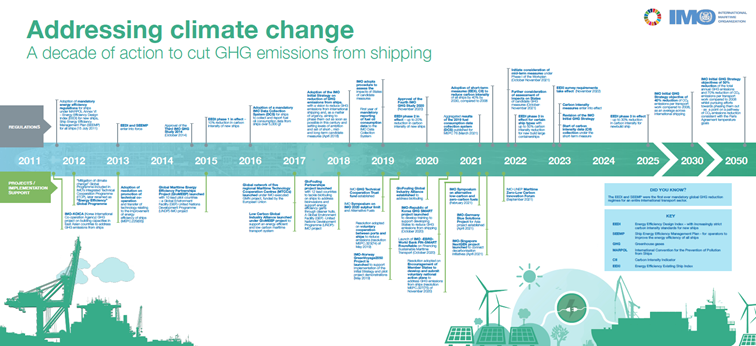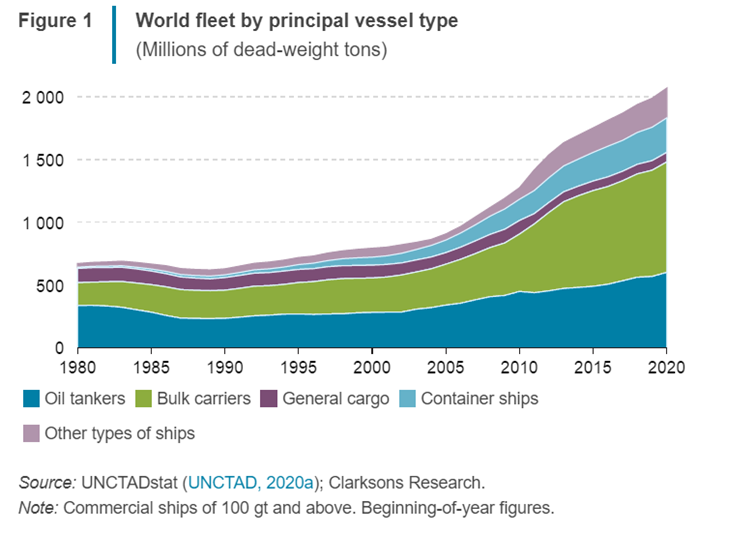Why Now? EEXI and CII, the shipping environmentalist's perspective.
 The Maritime industry is abuzz with two acronyms EEXI and CII, you will also inadvertently hear EEDI, but we as an industry are very familiar with this already. EEXI is the Energy Efficiency Existing Ship Index and is essentially the Energy Efficiency Design Index (EEDI) calculation applied to existing ships. CII on the other hand is the Carbon Intensity indicator, and while both EEXI and CII have reduction phases and CII needs to be recalculated, EEXI like EEDI deals with the Design of the vessel while CII deals with the operation of the vessel. This is important to distinguish because the vessel can continue to operate with a non-compliant CII rating (of course with a plan to attain compliance) but certainly not with a non-compliant EEXI value. The interesting thing to note is that the methodology proposed by IMO for EEXI compliance is to create a power reserve in the engine using an EPL (Engine Power Limiter) or SHaPoli (Shaft Power Limitation) , essentially slowing the ships speed capabilities for trade, the power reserve is however accessible to use in emergencies.
The Maritime industry is abuzz with two acronyms EEXI and CII, you will also inadvertently hear EEDI, but we as an industry are very familiar with this already. EEXI is the Energy Efficiency Existing Ship Index and is essentially the Energy Efficiency Design Index (EEDI) calculation applied to existing ships. CII on the other hand is the Carbon Intensity indicator, and while both EEXI and CII have reduction phases and CII needs to be recalculated, EEXI like EEDI deals with the Design of the vessel while CII deals with the operation of the vessel. This is important to distinguish because the vessel can continue to operate with a non-compliant CII rating (of course with a plan to attain compliance) but certainly not with a non-compliant EEXI value. The interesting thing to note is that the methodology proposed by IMO for EEXI compliance is to create a power reserve in the engine using an EPL (Engine Power Limiter) or SHaPoli (Shaft Power Limitation) , essentially slowing the ships speed capabilities for trade, the power reserve is however accessible to use in emergencies.So why now? It is part of the IMO strategy for reducing GHG emissions from shipping by 40% CO2 emissions per Transport work of 2008 levels by 2030 and 50% total GHG emissions by 2050 along with 70% reduction of CO2 emissions per Transport work with the intention of phasing them out according to the Paris agreement.

A couple things that are important in that loaded sentence are, firstly, the mention of the Paris agreement, in 2015 where 195 nations signed an agreement to help limit global temperature rise to 1.5°C and commissioned the Intergovernmental Panel on Climate Change (IPCC) to conduct a study as to the effects of the 1.5°C rise. Everyone from Barack Obama to Greta Thunburg have rallied for the world to get behind, without compromise and it is a driving force around the world in every sector to curb emissions and avert the Climate Change crisis. Secondly, “the intention of phasing them out”, a small phrase but essentially tells all, mass extinction, of power rich, high speed, high GHG emissions producing vessels. Essentially the vessels which we will frantically calculate an EEXI value and outline a roadmap to compliance for the phased reductions in the reference baseline, is on a short path to extinction. An irony not lost on mother nature. “Shipping will need new technologies, new fuels and innovation to meet the GHG targets. There needs to be investment in R&D, infrastructure and trials.” (imo.org). I tend to agree with this, and yes, I know it is a controversial issue in the shipping industry especially for ship owners and developing countries, but climate change is something we need to put in the forefront of all operations in all industries and lend support to collectively move to limit global temperature.
Approximately 3% of the world’s GHG emissions are from shipping transport and while that may seem small the issue that arises is, without actions to reduce emissions this figure is set to get away from us and predictions range between a 50% to 250% increase by 2050 which is an exact counterproductive move to the Paris climate agreement.

Light has been thrown onto the importance of shipping and global trade, with the effects of the COVID 19 pandemic, one of the reasons we have a chip shortage and consumers are being advised they may not be able to get all they want for the December 2021 holiday season, is because of shipping bottlenecks. To put this consumerism in perspective, the vessel Ever Green’s 6 day block of the Suez canal cost approximately 9.6 Billion (USD) in global trade. Consumers want faster and shorter supply chains and when 80% of trade is facilitated by Shipping (UNCTAD) it puts pressure on the charters and owners, but we cannot always follow the money blindly. EEXI and CII are part of a greater strategy to push back on the consumerism and create a balance. Therefore I would venture to say, in this scenario, mass extinction of the aging polluting fleet on the sea is the only option we have.
- Carla Audroing, Marine Manager
Back to all Verifavia Shipping News





